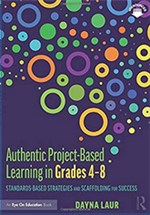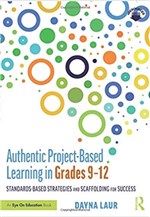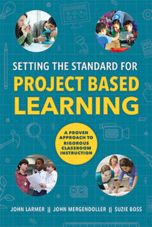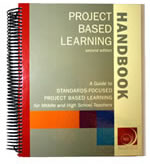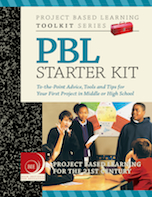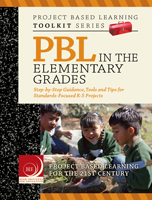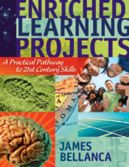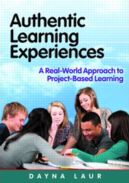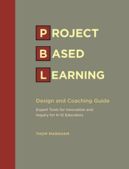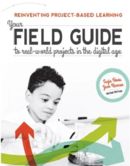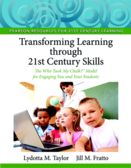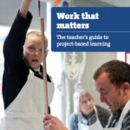Here are the handbooks and guides that I recommend to teachers and administrators working to implement Project-Based Learning (PBL) in today's schools. -- Bob, April 2012 and updated as new books are available. Updated September, 2019.
![]() September, 2019:
New Authentic PBL guidebooks for Grades 4-8 and for Grades
9-12 by Dayna Laur
September, 2019:
New Authentic PBL guidebooks for Grades 4-8 and for Grades
9-12 by Dayna Laur
![]() November, 2018: New Book: Project
Based Teaching: How to Create Rigorous and Engaging Learning Experiences,
By Suzie Boss with John Larmer
November, 2018: New Book: Project
Based Teaching: How to Create Rigorous and Engaging Learning Experiences,
By Suzie Boss with John Larmer
![]() November, 2017: New
PBL Book Recommendations from John Larmer, BIE Editor in Chief, October
27, 2017
November, 2017: New
PBL Book Recommendations from John Larmer, BIE Editor in Chief, October
27, 2017
![]() March, 2017: Developing
Natural Curiosity through Project-Based Learning: Five Strategies for the
PreK–3 Classroom, By Dayna Laur and Jill Ackers
March, 2017: Developing
Natural Curiosity through Project-Based Learning: Five Strategies for the
PreK–3 Classroom, By Dayna Laur and Jill Ackers
![]() October, 2016:
Project
Based Learning: Preparing Students for Tomorrow, Engaging Them Today,
by John Larmer, BIE, 2016
October, 2016:
Project
Based Learning: Preparing Students for Tomorrow, Engaging Them Today,
by John Larmer, BIE, 2016
![]() June, 2015: Setting
the Standard for Project Based Learning: A Proven Approach to Rigorous Classroom
Instruction, by John Larmer, John Mergendoller & Suzie Boss, ASCD
Books, 2015.
June, 2015: Setting
the Standard for Project Based Learning: A Proven Approach to Rigorous Classroom
Instruction, by John Larmer, John Mergendoller & Suzie Boss, ASCD
Books, 2015.
|
Dayna Laur (@daylynn) is the co-founder of Project ARC, an educational consulting organization that promotes the development of authentic, relevant, and complex learning experiences. Dayna leads workshops on PBL, authentic learning experiences, inquiry learning, critical thinking, Advanced Placement, technology integration, 1:1 programs, and STEAM. |
|
|
Dayna Laur (@daylynn) is the co-founder of Project ARC, an educational consulting organization that promotes the development of authentic, relevant, and complex learning experiences. Dayna leads workshops on PBL, authentic learning experiences, inquiry learning, critical thinking, Advanced Placement, technology integration, 1:1 programs, and STEAM. |
|
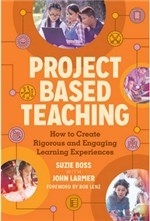 |
Project Based Teaching: How to Create Rigorous and Engaging Learning Experiences, By Suzie Boss with John Larmer (ASCD, 2018) In this book, Suzie Boss and John Larmer build on the framework for Gold Standard PBL originally presented in Setting the Standard for Project Based Learning and explore the seven practices integral to Project Based Teaching: Build the Culture: Design and Plan; Align to Standards; Manage Activities; Assess Student Learning; Scaffold Student Learning; and Engage and Coach. For each practice, the authors present a wide range of practical strategies and include teachers' reflections about and suggestions from their classroom experiences. This book and a related series of free videos provide a detailed look at what's happening in PBL classrooms from the perspective of the Project Based Teacher. Order here . |
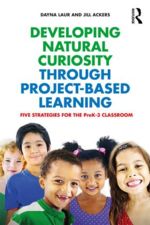 |
Developing Natural Curiosity through Project-Based Learning: Five Strategies for the PreK–3 Classroom, By Dayna Laur (@daylynn) & Jill Ackers (@IBPBLJill)(Routledge, 2017) Developing Natural Curiosity through Project-Based Learning is a practical guide that provides step-by-step instructions for PreK–3 teachers interested in embedding project-based learning (PBL) into their daily classroom routine. The book spells out the five steps teachers can use to create authentic PBL challenges for their learners and illustrates exactly what that looks like in an early childhood classroom. Authentic project-based learning experiences engage children in the mastery of twenty-first-century skills and state standards to empower them as learners, making an understanding of PBL vital for PreK–3 teachers everywhere. Order here. |
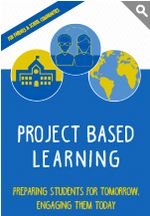 |
Project Based Learning: Preparing Students for Tomorrow, Engaging Them Today is written in an easy-to-read, jargon-free style and features colorful graphic design. It has sections on why PBL is important for today's K-12 students, what PBL is - with answers to FAQs about it - and what to expect at a school using PBL. Also included are powerful quotes from students and parents about the value of PBL, example projects from various subjects and grade levels, and links to websites and videos for more information. This booklet will help you build understanding and support for PBL in your school or district. Published by BIE and authored by Editor in Chief John Larmer, this 32-page color booklet explains PBL for parents and other members of a school community. Click here to see the blog about this booklet. Order here. Volume pricing available. |
|
Setting the Standard for Project Based Learning: A Proven Approach to Rigorous Classroom Instruction, by John Larmer, John Mergendoller & Suzie Boss, ASCD Books, 2015 Project based learning (PBL) is gaining renewed attention with the current focus on college and career readiness and the performance-based emphases of Common Core State Standards, but only high-quality versions can deliver the beneficial outcomes that schools want for their students. The authors—leaders at the respected Buck Institute for Education—take readers through the step-by-step process of how to create, implement, and assess PBL using a classroom-tested framework. Order here. |
|
|
2014: Available in traditional Chinese, modern Chinese, Portuguese, Korean, Spanish, Arabic, and Japanese. No longer available in English. BIE recommends instead the 3 handbooks below. PBL Handbook, Second Edition, By Thom Markham with John Larmer and Jason Ravitz, PhD, Buck Institute for Education, 2003 The PBL Handbook provides an overview of the what, why, and how of PBL. It guides middle and high school teachers through all phases of successful PBL, from deciding on a project idea to reflecting on the outcomes of a project. Order here. |
|
|
PBL Starter Kit, By John Larmer with David Ross and John R. Mergendoller, PhD, Buck Institute for Education, 2009 The PBL Starter Kit is written for middle school and high school teachers who are new to PBL. It contains easy to read, brief and to-the-point advice about your first, relatively simple project, with examples and tools to help you plan it well. It can be used as a supplement to BIE professional development workshops or as a stand-alone guide to PBL. Order here. |
|
|
PBL in the Elementary Grades, By Sara Hallerman and John Larmer, Buck Institute for Education, 2011 Designed for teachers of Kindergarten through 5th grade students, PBL in the Elementary Grades contains down-to-earth, classroom-tested advice, including sample projects, step-by-step guidance, tips from experienced practitioners, and planning tools. Order here. |
|
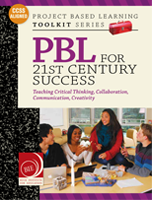 |
PBL for 21st Century Success, By Suzie Boss. Edited by John Larmer and John Mergendoller, Buck Institute for Education, 2013 July 2013 -- The newest book in BIE’s PBL Toolkit series is a practical guide to building 21st century student competency in the “4 C’s” – critical thinking, collaboration, communication, and creativity/innovation. Designed for middle school and high school teachers, instructional coaches, and school leaders, this book details how the 4 C’s align with the Common Core State Standards. Order here. |
|
Enriched Learning Projects: A Practical Pathway to 21st Century Skills, By James Bellanca, Solution Tree Press, 2010 Enriched Learning Projects effectively guides teachers through project planning, assessment, and implementation. Bellanca does this and more. His book is an intellectual dialogue direct with you, as a teacher, showing you not only how to design, assess, and implement projects, but also how to directly support your students with mind tools and mediation of critical thinking.
See Bob Pearlman's foreword to Enriched Learning Projects. Order the book here. Solution tree has also provided a superb reproducible resources page. |
|
|
Authentic Learning Experiences: A Real World Approach to Project Based Learning, By Dayna Laur, 2014 Learn how to implement a real-world approach to PBL. Authentic learning experiences are created around genuine, outside audiences and meaningful purposes. They meet the Common Core, engage students in critical thinking and 21st Century learning, teach important skills such as research and collaboration, and improve student learning. This practical guide provides step-by-step instructions to make it easy for teachers to create their own authentic learning experiences. Buy the book at Amazon. Also See Dayna Laur's website, Workshops and Resources, Blog. and Twitter: @daylynn |
|
|
PBL Design and Coaching Guide, By Thom Markham, 2012 The Project Based Learning Design and Coaching Guide will take you through the process of planning and managing world class projects. Included is access to the latest tools, planning forms, and resources for PBL, as well as hundreds of tips on trouble shooting projects, improving project quality, and methods for motivating and engaging students in projects. |
|
|
Reinventing
Project-Based Learning, , 2nd Edition, By Suzie Boss
and Jane Krauss Foreword by Leslie Conery, 2008 Reinventing Project-Based Learning offers educators an accessible guide for maximizing the benefits of project-based learning in today's technology-rich learning environment. This reader-friendly book speaks directly to educators, administrators, and professional development specialists who want to transform learning into a more active, student-driven experience, using technology tools for inquiry, collaboration, and connection to the world beyond the classroom. Examples from educators in many different countries showcase this new vision of instructional design. Buy the book at ISTE store or Amazon. |
|
|
Transforming Learning through 21st Century Skills: The Who Took My Chalk?™ Model for Engaging You and Your Students, By Lydotta M. Taylor and Jill M. Fratto, The EdVenture Group, 2012 Offering workbook-style-pages
and easy-to-read chapters, this book defines 21st century skills,
discusses why we need to teach today’s students differently,
and shows how to apply 21st century concepts in an education setting.
Following an eight-step model, readers learn about change management,
the impact of school culture, and goal-setting for school improvement. Look Inside and see Contents and Foreword by Bob Pearlman |
|
|
Work That Matters: The Teacher's Guide to Project-based Learning, By Alec Patton, Innovation Unit (UK), published as a partnership of High Tech High (San Diego) and Learning Futures, 2012. Features practices at High Tech High and Expeditionary Learning schools. Download PDF (Free) |
|
|
Project
Based Learning Guide,
National Academy Foundation and Pearson Foundation, 2011 This project-based learning resource, created as part of a partnership between the Pearson Foundation and the National Academy Foundation, focuses on digital storytelling as a tool and instructional best practice for Academies. Download PDF (Free) |

